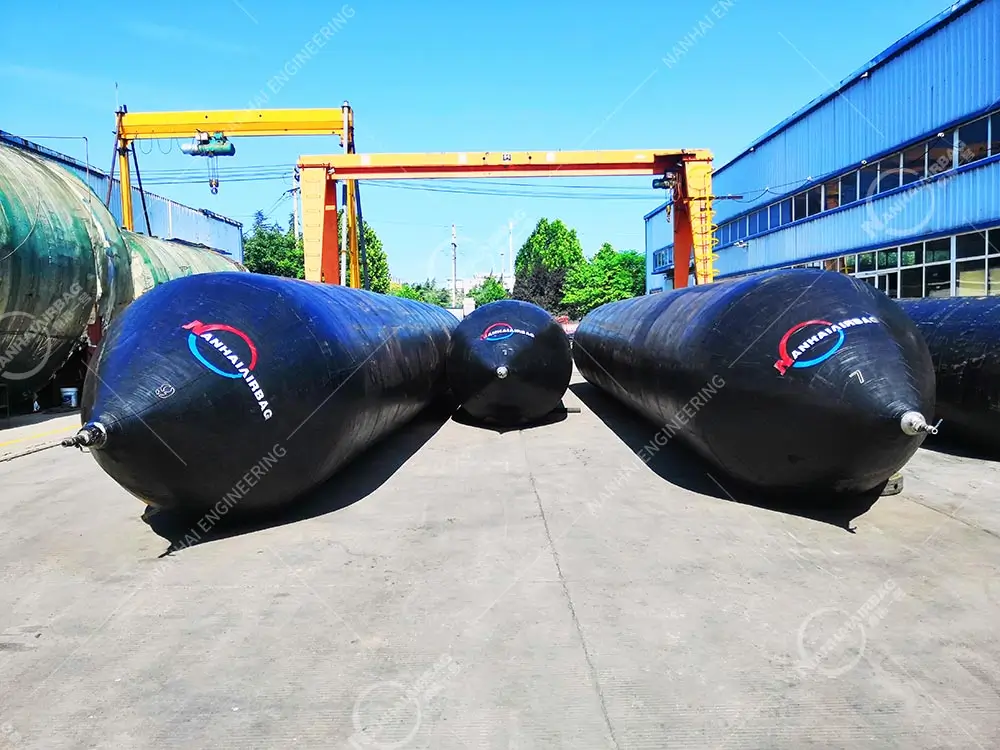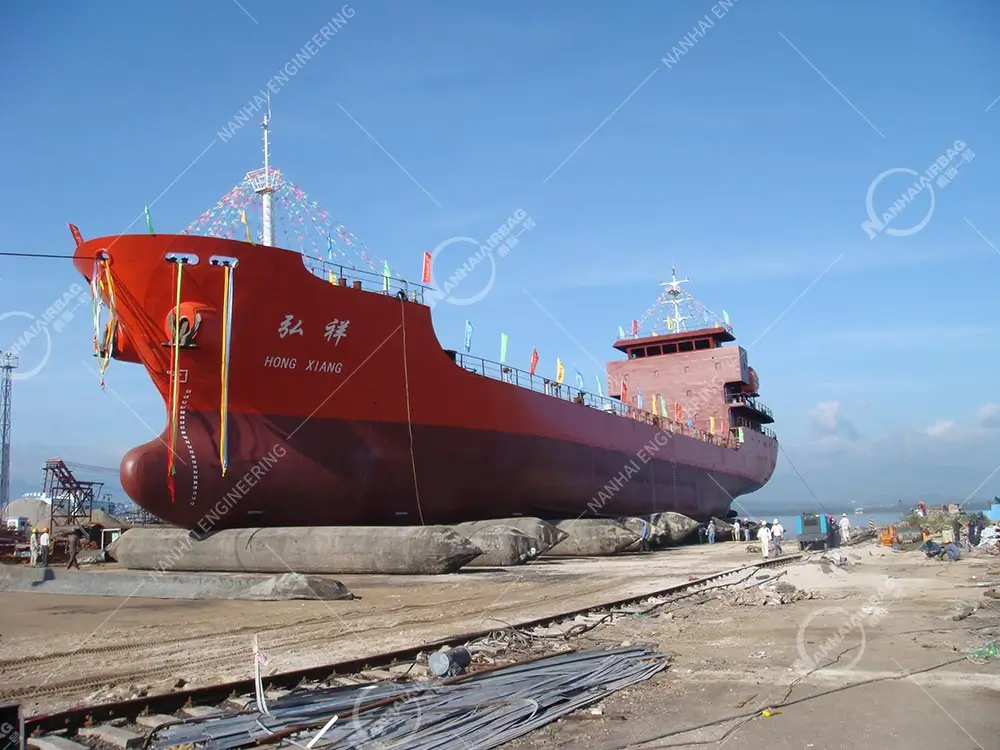How to store rubber fenders?
07/02/2025How to Choose the Right Floating Airbags for Your Project
07/02/2025Ship Launching Airbags Safety Tips
Why This Topic Is Urgent and Important
Using marine airbags for ship launching is now a widely accepted method in the shipbuilding industry. Compared to traditional slideways, ship launching airbags offer lower costs, higher flexibility, and easier deployment. However, they also introduce new safety and operational challenges.
For example, a small shipyard recently attempted to launch a vessel using low-quality airbags without proper planning. The result? An airbag burst under pressure, causing the ship to lean dangerously and halting operations for days. At NANHAI, we’ve seen how small oversights—like incorrect ship airbag layout or excessive pressure—can lead to big risks.
That’s why understanding the key safety points is not just technical—it’s essential to protect your crew, equipment, and reputation.

✅ Key Safety Measures When Using Ship Launching Airbags
1. Adjust the Initial Pressure (P₀) to Enhance Safety
Setting the right initial pressure inside the airbags is crucial. It is both practical and effective to lower P₀ to a suitable level based on the ship’s weight and the working environment. This prevents overloading and increases the lifespan of the airbags.
2. Scientific Arrangement of Marine Airbags Improves Load Distribution
Airbags should be spaced according to the ship’s weight distribution. Heavier sections need denser airbag placement, while lighter sections require fewer. This strategy maximizes support and reduces stress on any single airbag.
3. Maintain Minimum Ship Launching Airbag Height During Compression
The height of a compressed airbag should never go below 25 mm. Excessive flattening increases the risk of airbag damage and failure during the rolling motion.
4. Keep Pressure Within Safe Limits
The instantaneous maximum pressure inside the airbag must be less than 50% of its rated capacity. Exceeding this limit can cause ruptures and unexpected failures during launching.
5. Ensure a Reasonable Slope Transition on the Berth
If the berth slope is too steep, the bow can lose contact with the airbags, causing instability and even hull deformation. The slope should be gradual and smooth to maintain consistent support during movement.
6. Align Airbags Perpendicularly to the Hull Axis
Airbags must be positioned at a 90° angle to the longitudinal axis of the ship. If not, they may twist or stack during rolling, disrupting the ship’s forward motion and increasing the risk of an accident.

Additional Best Practices from NANHAI Experts
- Check surface conditions: Remove sharp debris or rocks from the slipway to prevent punctures.
- Use pressure gauges—not guesswork—to monitor internal ship airbag pressure.
- Prepare backup systems: Install winches or braking lines to control the descent.
- Follow international standards: Always choose ship launching airbags that comply with ISO 14409 and ISO 17682 standards for marine use.
At NANHAI, we’ve developed detailed guidelines for each launch, helping our clients achieve zero-defect launches for ships up to 10,000 DWT.
FAQ
Q1: What is the best initial pressure (P₀) for marine airbags?
A: Typically between 0.05 and 0.13 MPa, depending on the ship launching airbag size and the ship weight.
Q2: How do I prevent airbags from bursting during a ship launch?
A: Keep maximum pressure below 50% of capacity, use proper slope, and don’t over-compress.
Q3: Why is the marine airbag layout important?
A: Scientific layout ensures balanced support and prevents ship launching airbag slippage or collapse.
Q4: Should the slipway be modified for airbag launching?
A: Yes. The slope should be smooth and clean. If needed, reinforce with rubber mats or steel plates.
Q5: Can marine airbags be reused?
A: Yes, if maintained well and operated within their rated limits. Regular inspection is essential.
Final Thoughts: Safe Launching Begins with Smart Planning
Using ship launching airbags is not just a technical operation—it’s a precision task. Every decision, from pressure control to layout design, can affect the safety and success of the launch.
At NANHAI, we combine field-tested experience with modern engineering tools to help clients avoid costly mistakes. Whether you’re launching fishing boats, tugboats, or large cargo vessels, our solutions ensure that every launch is smooth, safe, and efficient.
Need help planning your next ship launch? Contact the NANHAI team for professional guidance and reliable marine airbag systems.
